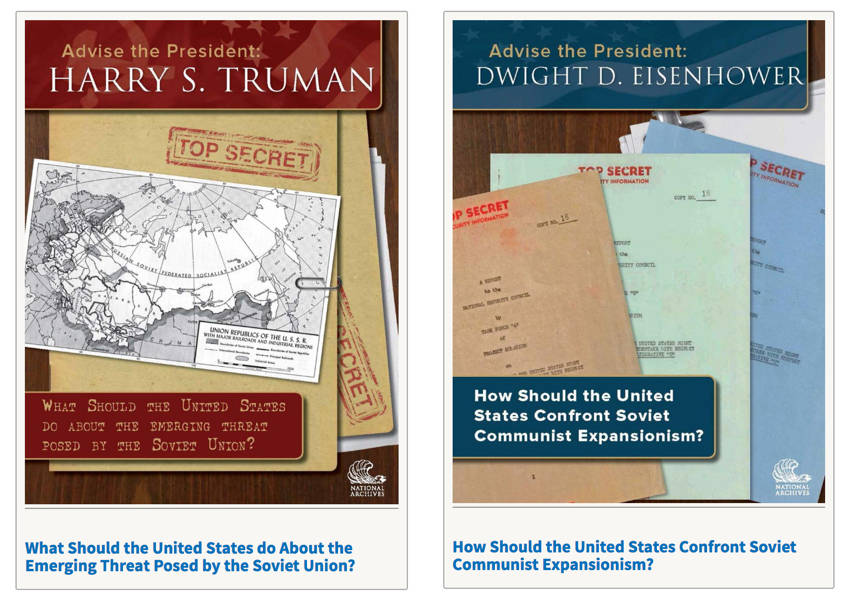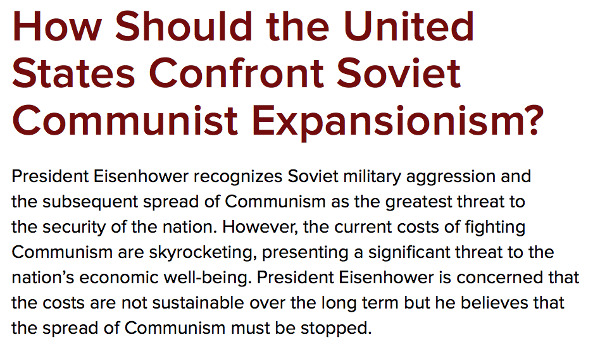Advise the President. Cause You’re Just That Smart.
Okay. Not that president. Other presidents. You know, from history.
Like Truman, Eisenhower, and Reagan. And they need your help. Even better, they need your students to help. The National Archives have put together something called Advise the President. And like everything else the Archives do, it’s awesome.
Throughout history, every president is faced with having to make difficult decisions. The Advise the President series gives you the chance to bring the deliberation process surrounding these historic decisions to the classroom. Each booklet focuses on a significant topic during the administration of a specific president.
There are currently five problems and presidents that you and students can work with:
- Truman:
What Should the United States do About the Emerging Threat Posed by the Soviet Union? - Eisenhower:
How Should the United States Confront Soviet Communist Expansionism? - Ford:
How Should the Federal Government Respond to New York City’s Financial Crisis? - Reagan:
How Should the United States Move Towards Economic Recovery? - Clinton:
What Should the United States Do About The Kosovo Crisis?

The series is a ready-to-use tool that provides you with an opportunity to bring historic presidential decisions into the classroom. Using a deliberation process, students will learn about history by focusing on pivotal issues faced by past presidents. Your kids are given the chance to travel back to these historic moments and take on the role of a presidential advisor. Given options similar to those the president considered, the students deliberate each presented option and decide on the choice they think is best.
This is the example of the problem that Eisenhower faced in the 1950s:

The Advise the President Series focuses on using original documents, and photographs to provide students with an in depth understanding of historical events related to the presidents. Which is perfect for having kids practice historical thinking skills.
Tools and ideas to transform education. Sign up below.
Each of the different simulations also include moderator guides that accompany each booklet to assist you in guiding students through the deliberation process and promoting productive discussion. Each booklet in the series also features a detailed reveal of the decision the president ultimately made.
This is a perfect way to have kids use evidence to support a claim. One way to extend would be to have students connect the historical problem to a contemporary issue. But even if all you do is follow the resources provided, you’re golden.
I also like the idea of using the structure to extend the process to other presidents and their problems. Give kids sample problems and ask kids to create their own three options to explore. This seems like a perfect place to introduce some counterfactual thinking here. Perhaps add additional options and have students explore what might have happened.
cross posted at glennwiebe.org
Glenn Wiebe is an education and technology consultant with 15 years' experience teaching history and social studies. He is a curriculum consultant forESSDACK, an educational service center in Hutchinson, Kansas, blogs frequently at History Tech and maintains Social Studies Central, a repository of resources targeted at K-12 educators. Visit glennwiebe.org to learn more about his speaking and presentation on education technology, innovative instruction and social studies.
